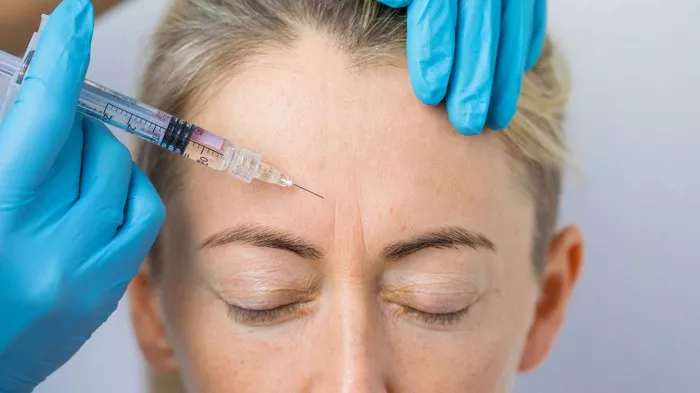Botox has become a popular non-surgical cosmetic treatment for addressing forehead wrinkles and lines. It works by temporarily relaxing the muscles responsible for causing these wrinkles, resulting in a smoother, more youthful appearance. If you’re considering Botox for your forehead, you may be wondering how long the effects will last. In this article, we will explore the duration of Botox in the forehead and the factors that can influence its longevity.
Understanding Botox and Its Mechanism of Action
Before discussing the duration, let’s briefly understand how Botox works. Botox is a purified form of botulinum toxin that is injected into specific muscles to temporarily paralyze them. When injected into the forehead muscles, it blocks the release of certain neurotransmitters, preventing muscle contractions and reducing the appearance of wrinkles.
Duration of Botox Effects in the Forehead
The effects of Botox in the forehead are not permanent. The duration can vary from person to person and is influenced by several factors, including:
-
Individual Metabolism
Each person’s metabolism is unique, which means that the body may metabolize Botox at different rates. Some individuals may experience faster breakdown and elimination of Botox, leading to shorter-lasting effects, while others may have a slower metabolism, resulting in longer-lasting results.
-
Dosage and Injection Technique
The dosage of Botox administered and the technique used by the injector can affect the longevity of the treatment. An experienced and skilled medical professional will assess your facial muscles and determine the appropriate dosage and injection points to achieve optimal results.
-
Muscle Strength
The strength of your forehead muscles can also influence the duration of Botox effects. Individuals with stronger muscles may require higher doses or more frequent treatments to maintain the desired results.
-
Treatment History
If you have been receiving Botox treatments regularly, the effects may last longer over time. With repeated treatments, the muscles become weaker, and the results tend to last longer. However, this can vary among individuals.
-
Lifestyle Factors
Certain lifestyle factors can impact the duration of Botox effects. Smoking, excessive sun exposure, and poor skincare practices can accelerate the breakdown of Botox and affect the longevity of the results. Maintaining a healthy lifestyle and following good skincare habits can help prolong the effects of Botox.
Typical Duration of Botox Effects
On average, the effects of Botox in the forehead typically last between three to four months. However, it’s important to note that this is a general estimate, and individual experiences may vary. Some individuals may find that the effects start to diminish after two months, while others may enjoy the benefits for up to six months before needing another treatment.
It’s worth mentioning that the initial results of Botox may take a few days to become noticeable, with the full effects becoming apparent within two weeks. During this time, the muscles gradually relax, and the appearance of forehead wrinkles diminishes.
Maintaining Results and Follow-Up Treatments
To maintain the desired results, follow-up treatments are necessary. As the effects of Botox wear off, the muscles regain their strength, and the wrinkles may reappear. It is recommended to schedule your follow-up appointment before the effects completely fade to ensure continuous improvement in your forehead appearance.
Some individuals may find that with regular Botox treatments over time, they require fewer units or less frequent treatments to achieve and maintain the desired results. This can be discussed and determined during consultations with your healthcare provider.
Important Considerations and Precautions
While Botox is generally considered safe when administered by a qualified medical professional, there are some considerations and precautions to keep in mind:
-
Qualified Provider
Ensure that you receive Botox injections from a licensed and experienced healthcare provider. They will have the necessary expertise to assess your unique facial structure, determine the appropriate dosage, and administer the injections safely.
-
Potential Side Effects
While side effects are generally mild and temporary, they can include bruising, swelling, redness, or mild pain at the injection site. These effects typically subside within a few days. Rarely, more serious side effects such as drooping eyelids or eyebrows may occur. Be sure to discuss any concerns or questions with your healthcare provider.
-
Treatment Frequency
The frequency of Botox treatments can vary depending on individual needs and preferences. Your healthcare provider will guide you on when to schedule your follow-up appointments to maintain the desired results.
-
Combination Treatments
Botox can be combined with other cosmetic treatments, such as dermal fillers, to achieve a more comprehensive rejuvenation of the forehead and overall facial appearance. Your healthcare provider can discuss and recommend appropriate treatment options based on your specific goals.
Conclusion
Botox is an effective treatment for reducing forehead wrinkles and lines, providing a smoother and more youthful appearance. While the duration of Botox effects in the forehead can vary among individuals, it typically lasts between three to four months. Factors such as individual metabolism, dosage, muscle strength, treatment history, and lifestyle choices can influence the longevity of the results.
To maintain the desired effects, follow-up treatments are necessary, and scheduling your next appointment before the effects wear off is advisable. By working with a qualified healthcare provider and discussing your goals and expectations, you can enjoy the benefits of Botox and achieve a refreshed, rejuvenated forehead appearance. Remember to follow all aftercare instructions provided by your healthcare provider and maintain a healthy lifestyle to maximize the longevity of your Botox results.

